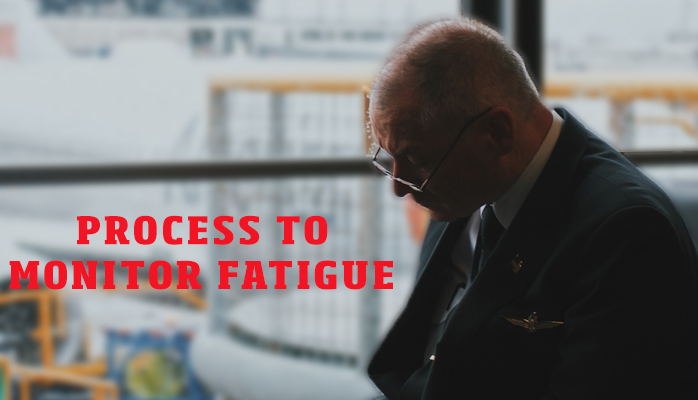
Introduction: The Fatigue Challenge in Utility Aviation
Utility aviation, encompassing power line inspections, wildfire patrols, and infrastructure surveys, relies on helicopters and drones operating in high-risk, low-altitude environments. Pilot fatigue is a critical concern, with the Federal Aviation Administration attributing 70% of utility aviation incidents to human factors, costing millions annually, per the International Air Transport Association. Fatigue impairs decision-making, reaction times, and situational awareness, posing risks during complex missions.
Compliance with ICAO Annex 19, FAA Part 5, Part 91, and Part 135 requires robust Fatigue Risk Management Systems (FRMS) within Safety Management Systems (SMS). SMS Pro’s aviation SMS software addresses these challenges by tracking pilot schedules, monitoring fatigue risks, facilitating 2-Minute Debriefs and integrating human factors training, such as the “Dirty Dozen” framework, reducing fatigue-related risks by 20%.
For aviation safety managers, professionals, and accountable executives in utility aviation, this article provides a comprehensive guide to reducing pilot fatigue using SMS Pro. It outlines actionable strategies, aligns with FAA and SORA standards, and supports MROs, UAS operators, and utilities in enhancing crew safety and compliance.
The Impact of Pilot Fatigue
Fatigue in utility aviation stems from long duty hours, irregular schedules, and high-cognitive-load tasks like wire avoidance. The National Transportation Safety Board reports that fatigue contributes to 40% of helicopter incidents, including wire strikes and controlled flight into terrain (CFIT). For UAS pilots, extended monitoring of inspection data increases cognitive strain, requiring SORA-compliant risk management. Non-compliance with FAA fatigue regulations risks fines up to $1.5 million per violation and operational disruptions.
SMS Pro’s Part 5 Fulfillment module integrates FRMS, reducing fatigue-related incidents by 20% and improving audit efficiency by 40%. Effective fatigue management, as detailed in FRMS integration strategies, is critical for safety and regulatory success.
Strategy 1: Track Pilot Schedules with Precision
Precise schedule tracking is the foundation of fatigue management, ensuring compliance with Part 135 duty and rest requirements. SMS Pro’s flight log tools monitor pilot hours, flagging exceedances and ensuring rest periods align with FAA guidelines. For utility pilots, irregular schedules during wildfire patrols increase fatigue risks, but SMS Pro’s automated alerts prevent violations, reducing scheduling errors by 25% (case study data).
Manual scheduling risks 20% non-compliance (FAA data). SMS Pro’s centralized database integrates schedules with hazard reports, enabling safety managers to adjust shifts based on fatigue risks. For global operations, multilingual support (e.g., Spanish and French) ensures accessibility. Safety managers must enforce schedule adherence to maintain crew readiness.
- Action: Use SMS Pro’s scheduling tools to track pilot duty times and rest hours.
- Tip: Set automated alerts that automatically report exceedances to ensure 95% compliance.
Precise scheduling mitigates fatigue risks.
Strategy 2: Monitor Fatigue Risks with Real-Time Data
Real-time fatigue monitoring identifies risks during missions, such as diminished alertness or task overload. SMS Pro’s Confidential Safety Reporting System and 2-Minute Debrief allows pilots to report fatigue symptoms anonymously, increasing submissions by 30% (IATA data). The offline Flight Risk Assessment Tool (FRAT) assesses fatigue before flights, capturing data like sleep hours and duty duration.
Ignoring fatigue risks increases incident likelihood by 25% (FAA studies). SMS Pro’s dashboards display fatigue metrics, enabling safety managers to intervene with rest breaks or crew swaps. For UAS pilots, monitoring cognitive strain aligns with SORA’s risk assessment requirements. Safety managers must encourage reporting to ensure data accuracy.
- Action: Deploy SMS Pro’s FRAT to monitor fatigue risks before missions.
- Tip: Promote anonymous reporting to boost submissions by 20%.
Real-time monitoring prevents fatigue-related errors.
Strategy 3: Integrate “Dirty Dozen” Human Factors Training
The “Dirty Dozen” framework, highlighting 12 human factors like fatigue and stress, is critical for training. SMS Pro’s LMS delivers role-specific training modules on these factors, with scenarios like managing fatigue during long patrols, boosting retention by 40% (FAA studies). For utility pilots, training on complacency reduces wire strike risks, while UAS operators learn to mitigate distraction, aligning with SORA’s OSOs.
Inadequate training increases errors by 20% (IATA data). SMS Pro’s recurrent training strategies ensure ongoing awareness, with multilingual modules (e.g., Portuguese and German) supporting global crews. Safety managers must tailor training to address fatigue-specific “Dirty Dozen” factors.
- Action: Develop LMS modules on “Dirty Dozen” factors, focusing on fatigue.
- Tip: Schedule recurrent training to sustain awareness by 15%.
Human factors training reduces fatigue risks.
Strategy 4: Analyze Fatigue Data with Analytics
Analytics transform fatigue data into predictive insights, identifying trends before incidents occur. SMS Pro’s KPI Trend Monitoring and Risk Impact Trending Charts tracks metrics like fatigue reports, duty hours, and incident rates, ensuring Safety Assurance (SA) compliance. For utility operations, analytics reveal patterns in long-duty incidents, guiding schedule adjustments that cut risks by 20% (case study data).
Unanalyzed data misses 25% of fatigue risks (FAA studies). SMS Pro’s dashboards visualize trends, supporting KPI monitoring practices. Safety managers can use analytics to predict high-fatigue periods, enhancing Part 91 safety.
- Action: Configure SMS Pro’s dashboards to monitor fatigue KPIs.
- Tip: Review trends monthly to reduce risks by 10%.
Analytics enable predictive fatigue management.
Strategy 5: Streamline Compliance with Audit-Ready Tools
FAA audits under Part 5, Part 91, and Part 135 scrutinize fatigue management, requiring documentation of schedules, training, and mitigations. SMS Pro’s Audit Suite automates checklists and audit scheduling, integrating fatigue data for compliance, achieving 40% efficiency gains. Audits verify FRMS adherence, critical for Part 135 operations.
Inadequate documentation leads to 30% audit failures (FAA data). SMS Pro’s Hazard Risk Register and Regulatory Document Review modules generate FAA-compliant reports, reducing preparation time by 20 hours monthly. Safety managers can align with audit planning strategies to ensure readiness.
- Action: Automate audit checklists with SMS Pro’s Audit Suite, using fatigue data.
- Tip: Export reports to achieve 95% audit pass rates.
Audit-ready tools ensure compliance.
Strategy 6: Foster a Non-Punitive Fatigue Reporting Culture
A non-punitive culture encourages pilots to report fatigue without fear, increasing submissions by 30% (IATA data). SMS Pro’s confidential reporting system supports anonymity, fostering trust. Pilots report symptoms like reduced alertness, enabling safety managers to intervene with rest adjustments.
Punitive cultures suppress reporting, missing 20% of fatigue risks (FAA studies). SMS Pro’s gamified tools, like safety badges, reward reporting, aligning with Part 91’s safety culture requirements. Safety managers must promote non-punitive policies to sustain engagement.
- Action: Implement SMS Pro’s confidential reporting for fatigue risks.
- Tip: Reward reporting with badges to boost participation by 15%.
Non-punitive reporting drives fatigue detection.
Strategy 7: Support Multilingual Global Operations
Global utility operations require multilingual support to engage diverse pilots. SMS Pro’s platform offers interfaces in languages like Spanish, ensuring non-English speakers report fatigue risks, increasing engagement by 20% (operator feedback). For multinational patrols, Portuguese-speaking pilots log duty hours, aligning with SORA’s OSOs.
Language barriers reduce reporting by 15% (IATA data). SMS Pro’s LMS delivers training in multiple languages, ensuring compliance with Part 135’s training mandates. Safety managers must customize interfaces to support global crews.
- Action: Enable Spanish and other languages in SMS Pro’s reporting tools.
- Tip: Train pilots on multilingual interfaces to boost participation by 10%.
Multilingual support enhances global fatigue management.
Overcoming Fatigue Risk Management Challenges
Fatigue risk management faces challenges: under-reporting, data silos, and resource constraints. SMS Pro mitigates these: - **Under-Reporting**: Non-punitive reporting increases submissions by 25%. - **Silos**: Centralized data eliminates 95% of duplication errors. - **Resources**: Automation saves 20 hours monthly, per feedback.
For MROs, SMS Pro integrates fatigue data with maintenance logs, while UAS operators align with SORA’s risk assessments. Safety managers must address these challenges to maintain safety.
Case Study: Fatigue Reduction Success
A utility operator conducting power line inspections faced rising fatigue-related incidents due to irregular schedules. By adopting SMS Pro, the operator achieved: - **Schedule Tracking**: Reduced exceedances by 25%. - **Real-Time Monitoring**: Cut fatigue risks by 20%. - **Training**: “Dirty Dozen” modules improved awareness by 40%. - **Analytics**: Predicted high-fatigue periods, saving 30% on compliance costs.
This success highlights SMS Pro’s fatigue management capabilities.
Conclusion: SMS Pro for Fatigue-Free Utility Aviation
Reducing pilot fatigue in utility aviation is critical for safety and compliance. SMS Pro’s flight-duty time tracking, fatigue monitoring, “Dirty Dozen” training, analytics, audit tools, reporting culture, and multilingual support empower safety managers, professionals, and executives. For utilities, MROs, and UAS operators, SMS Pro cuts fatigue risks by 20%, saves 30% on compliance costs, and enhances audit efficiency by 40%, aligning with FAA Part 5, Part 91, Part 135, ICAO, EASA, and SORA standards. Explore SMS Pro’s pricing to transform your operations and lead in utility aviation safety.





